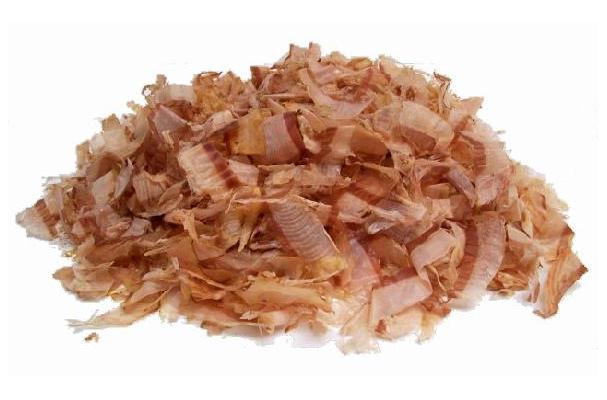Bonito Flakes
About
Katsuobushi is dried and smoked bonito (skipjack tuna) that is then shaved into thin flakes. It is a key ingredient in Japanese cooking, specifically its use in making dashi, a fish stock commonly used as a base in many recipes.
Information
Physical Description
They look similar to wood shavings but are actually flakes or shavings of dried and smoked flesh of the bonito fish, which is a relative of mackerel.
Tasting Notes
Selecting and Buying
Preparation and Use
Bonito flakes are used to make katsuobushi-dashi, for onigiri filling and in making ponzu sauce.
Bonito flakes is an essential component of numerous Japanese cuisine dishes and one of the basic ingredients of dashi, a widely used stock in Japanese cuisine.
Also widely used flavoring for Asian sauces, noodle dishes and as garnish and seasoning in soups and overcooked vegetables.
Conserving and Storing
Opened bags of bonito flakes should be tightly closed and stored in the refrigerator after use. It is advised that you consume the whole opened bag as soon as possible, within three weeks, to avoid oxidation of fish oil which will make your dishes taste bitter and fishy.











Comments
August 16, 2012
Katsuobushi is not only dried and smoked but fermentation also has an important part. It is the mold that cracks the fat molecules and transforms them into savory umami. Traditionally umeboshi is sold as a whole and shaved at home, but pre-packed flakes are very convenient.
Here is a photo of a whole katsuoboshi
http://www.ANYTHING-FROM-JAPAN.COM/Katsuobushi-Block-p/9.htm